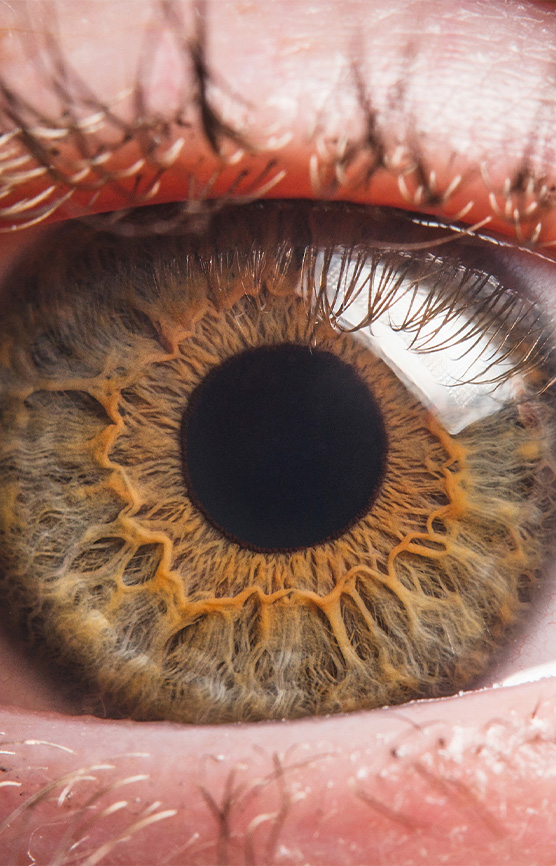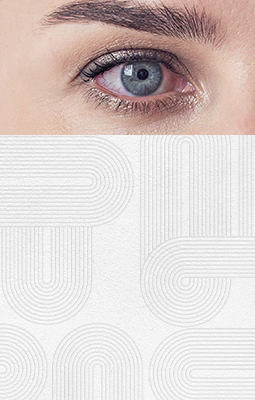Treatment Starts with an Assessment
If you are experiencing symptoms of dry eye then a comprehensive evaluation is indicated. During the dry eye evaluation, we will test how well your tear film protects your ocular surface as well as determine the cause of your symptoms. We will then develop a personalized treatment plan individualized for you.
Contact us today to get started with a dry eye assessment in our office.
Book Appointment
Common Dry Eye Symptoms
You may have dry eye if you’re experiencing any of these common symptoms: stinging, burning, mucus, sensitivity to light, eye redness, feeling like something is in your eye, watery eyes, blurred vision, or difficulty wearing contacts or driving at night.
It’s important to see a doctor if you are experiencing symptoms to prevent infections or damage to the eye.
Book AppointmentHere for All of Your Dry Eye Needs
While an assessment is the first step to relieving dry eyes, Dr. Ross wants to give her patients the care and advice they deserve right away. This means that after an assessment, patients will often receive same day treatment either in our office or leave with take home treatments. Our goal is to listen, answer your questions, and create a personalized treatment plan.
We want you to feel at ease, informed, and empowered when you leave our practice, knowing that you have Dr. Ross and a team of caring professionals on your side.
Do You Have Dry Eye? Take Our Quick Quiz
Our Diagnostic Tests
When assessing our patients for dry eyes we use the latest technology such as ESWIN’s Tearcheck to help us identify any ocular surface abnormalities that need to be addressed.
Testing the ocular surface is especially important for contact lens wearers who may suffer from contact lens intolerance or reduced wearing time.
Meibography
Meibography is the process of using illumination to get a better view of the meibomian glands. This procedure allows the structure of the glands, including the ducts, to be viewed. In our office, we use the Tearcheck Meibography IR technology to show the rate of gland loss, as well as the morphology of the glands present.
Ocular Surface Staining Test
An Ocular Surface Staining test uses dyes that temporarily stain the surface of the eye to better see certain abnormalities.
An orange dye, Fluorescein, is applied to detect corneal abnormalities and the stability of the tear film. A green dye, Lissamine Green, is used to show dead cells on the eyelid margin and conjunctiva.
Evaluating Dry Eye with ESW Vision tearcheck
We use the ESW Vision tearcheck technology in our evaluations to provide us with high-resolution imagery and fast, accurate readings. The tearcheck technology assists us in determining the appropriate treatment for your dry eye, such as intense pulse light (IPL) sessions. The ESW tearcheck creates an elevated standard for evaluating dry eye using 9 different exams for analysis, including abortive blinking, tear film stability, Demodex mites, tear meniscus height, and ocular surface inflammatory risk.
Abortive Blinking
The abortive blinking exam identifies the number of blinks as well as the quality of blinks a person produces in one minute. This information lets us know if the patient fully closes their eyes when blinking.
Tear Film Stability & NIBUT
The Tear Film Stability Test and the Noninvasive Breakup Time test (NIBUT) shows movements in the tear film over a period of 10 seconds. This dryness score lets us know how quickly the tear film is breaking up after blinking.
Demodex Mites
The Demodex test takes a large image of the base of the eyelashes in order to clearly see if there are Demodex mites present. Demodex mites are small parasites that live in hair follicles and oil glands on the face. They can live along the eyelashes in cases of blepharitis.
Tear Meniscus Height (TMH)
The tear meniscus height (TMH) exam identifies the height of the meniscus. To do this, both the area below the iris center and the thickest measurement are taken. Research has shown that a meniscus height of less than 0.25 mm can point to dry eye.
Ocular Surface Inflammatory Risk Evaluation
The Ocular Surface Inflammatory Risk Evaluation is a valuable tool to identify the risk of inflammation and pinpoint the dryness score of a patient.
What Happens After a Dry Eye Assessment?
After a dry eye assessment is completed, we can move forward with a treatment plan. In our office, same-day treatment is often available. There are many available dry eye treatments. Our evaluations help us to determine what may be right for you.
Contact Us to Book an Assessment
Dry eye treatment starts with an assessment. Visit Dr. Ross today to discuss the symptoms you may be having and to begin your evaluation.
Book AppointmentVisit Our Locations
Your eye health journey begins here, with two locations in the New York area to serve you. In the Bronx, you can find us in Dr. Terraciano’s Practice, and in Larchmont, we are located within Larchmont Eye Associates. We look forward to welcoming you to either of our convenient locations for your dry eye relief and eye care needs.
Bronx
- 2241 Esplanade
- Bronx, NY 10469
- Phone: 718-654-7122
- Fax: 718-547-5876
- Email: [email protected]
Hours of Operation
- Monday: 9:00 AM – 5:00 PM
- Tuesday: 9:00 AM – 5:00 PM
- Wednesday: 9:00 AM – 5:00 PM
- Thursday: Closed
- Friday: Closed
- Saturday: Closed
- Sunday: Closed
Larchmont
- 2365 Boston Post Rd #202
- Larchmont, NY 10538
- Phone: 914-834-2020
- Email: [email protected]
Hours of Operation
- Monday: 10:00 AM – 6:00 PM
- Tuesday: 9:00 AM – 5:00 PM
- Wednesday: Closed
- Thursday: 11:00 AM – 7:00 PM
- Friday: Closed
- Saturday: 9:00 AM – 1:30 PM
- Sunday: Closed






